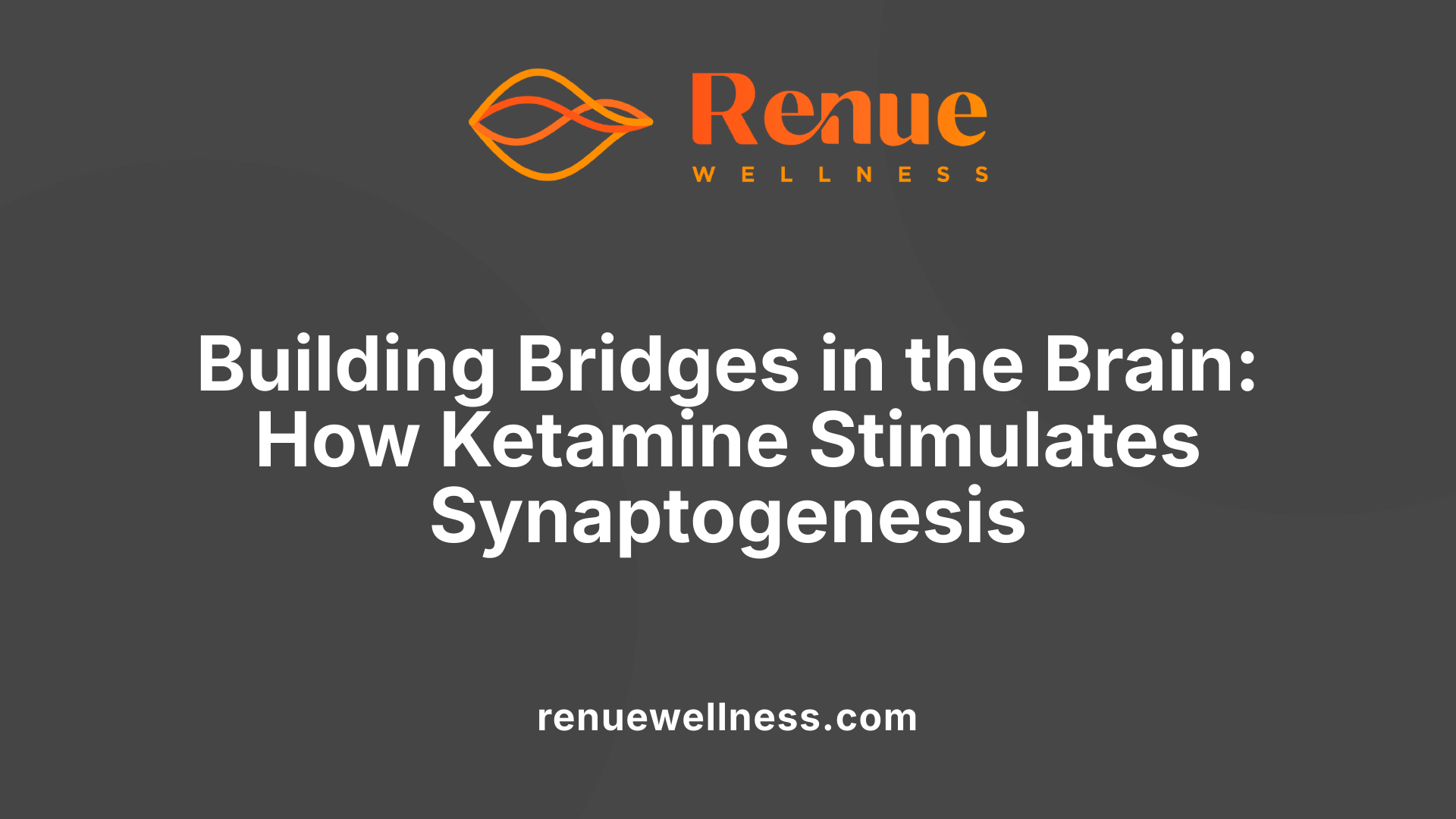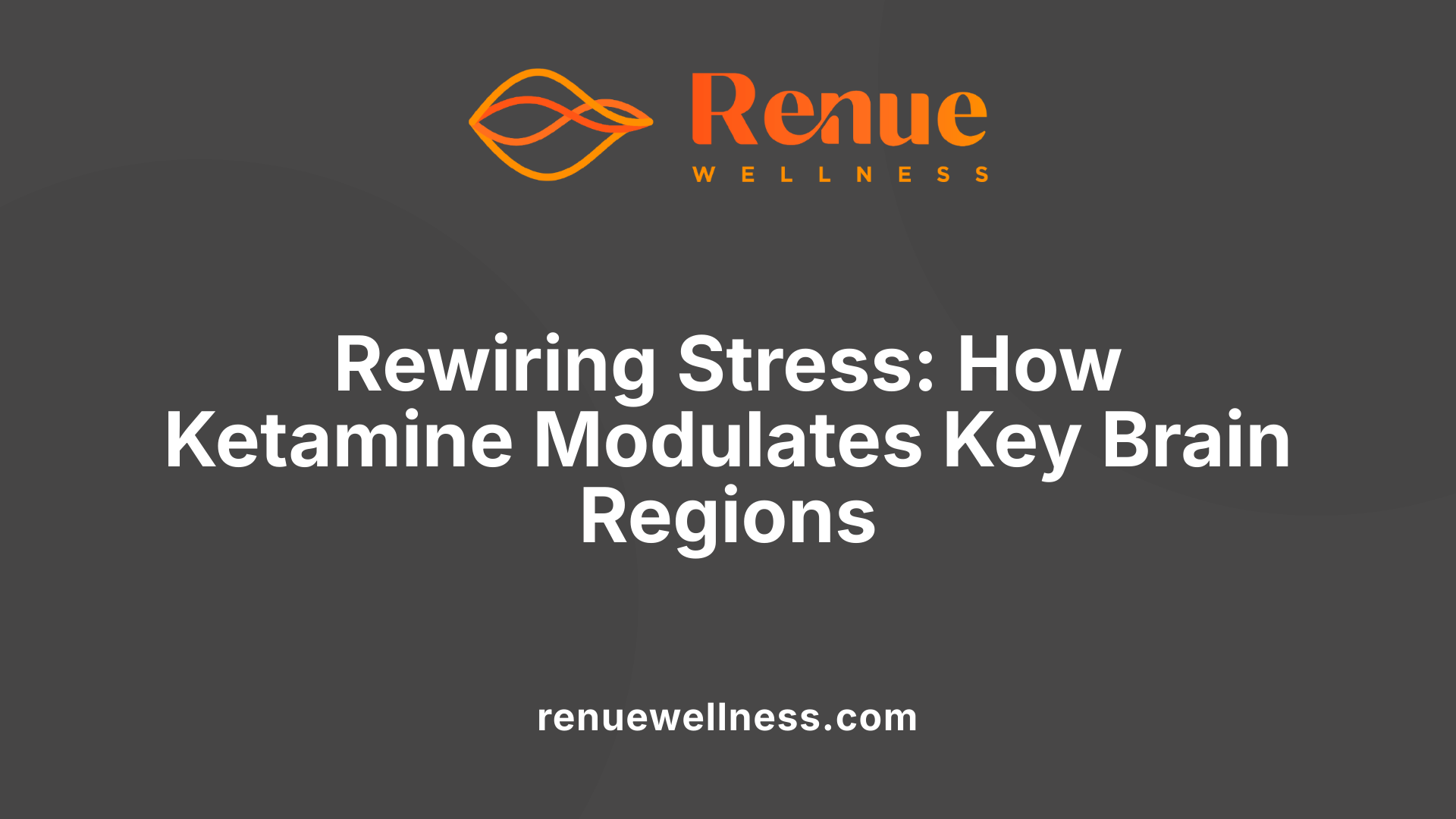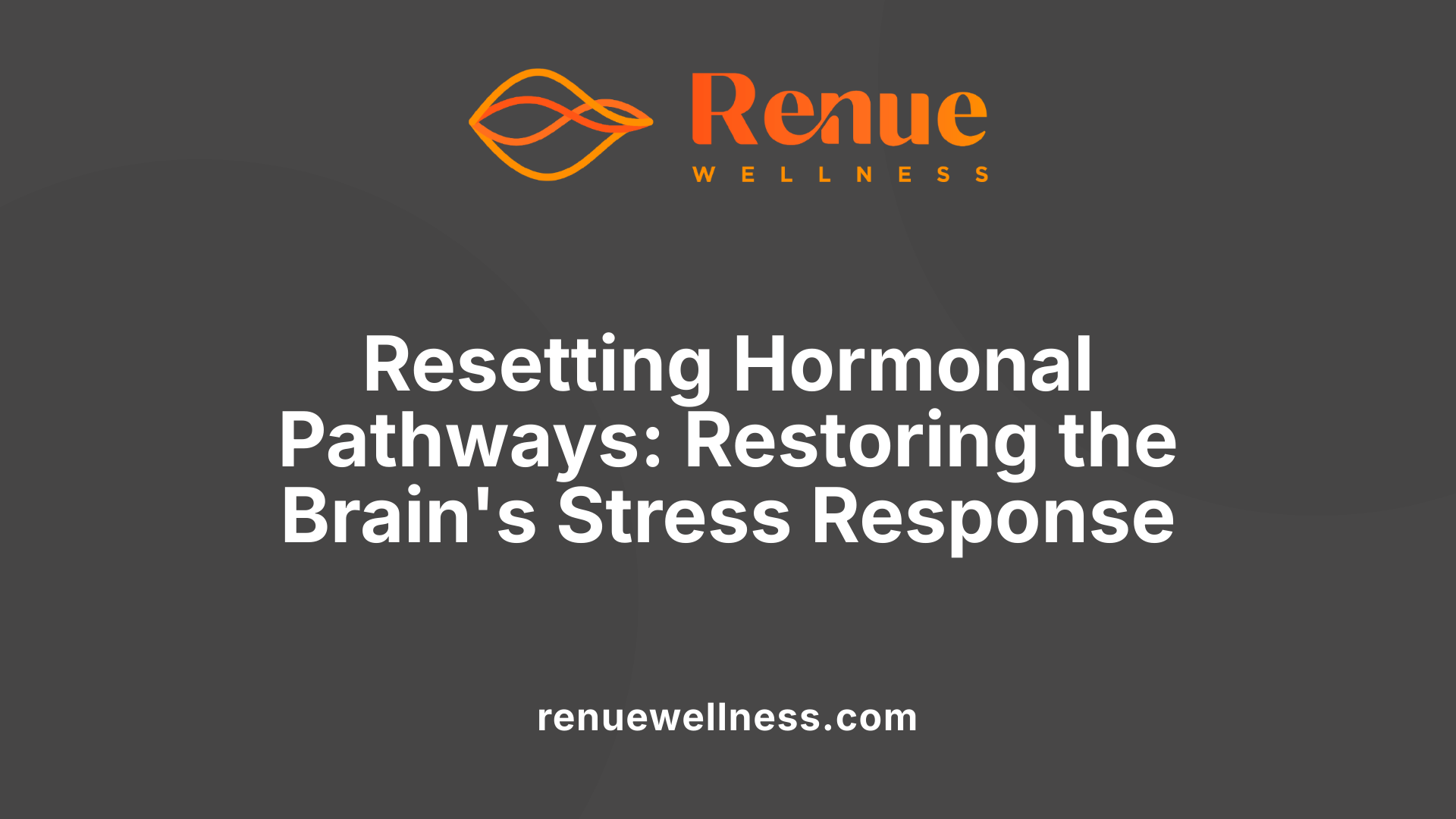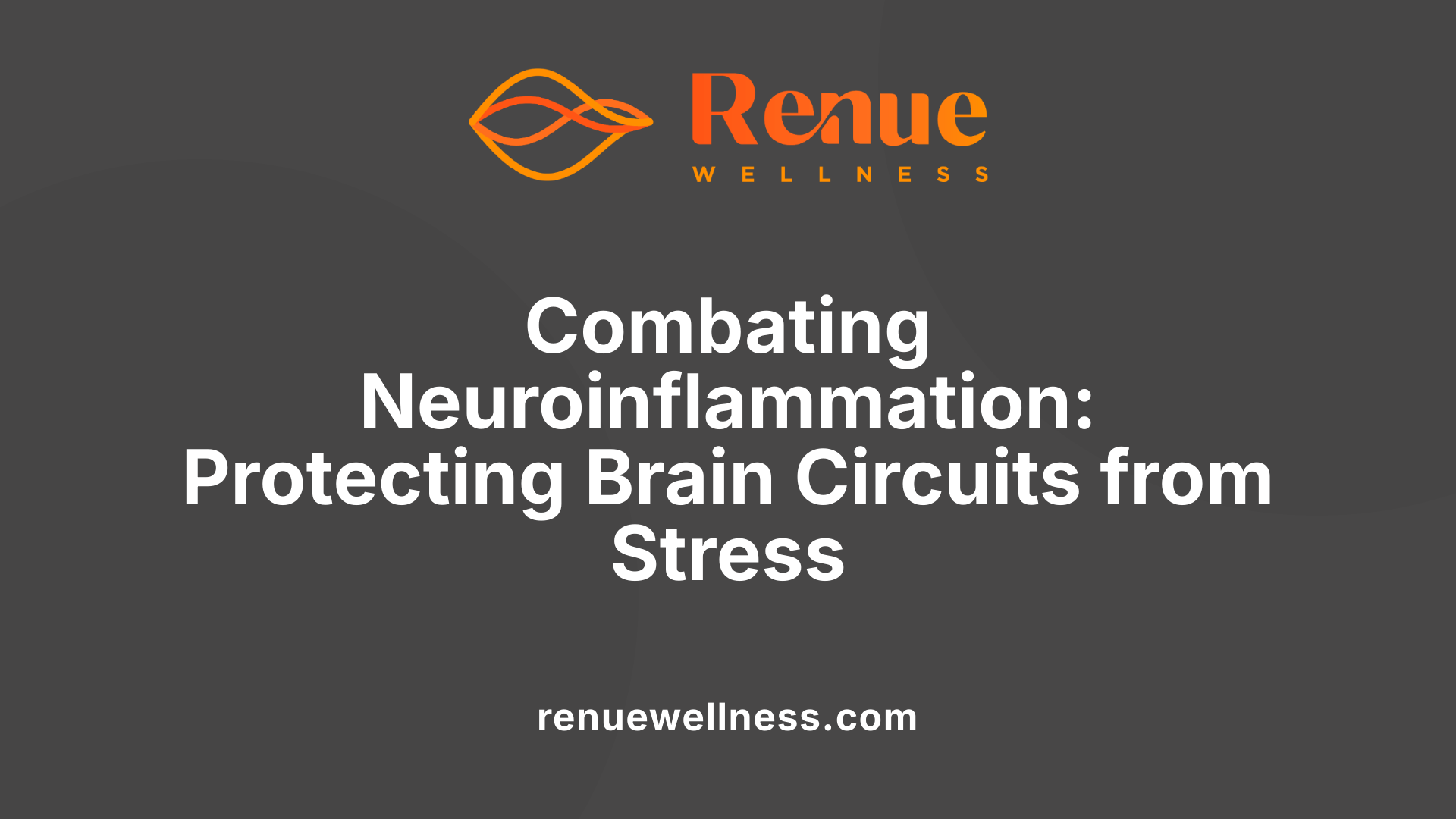Can Ketamine Help Reset the Brain’s Stress Response?


August 12, 2025
Revolutionizing Stress Management Through Neuroplasticity
Recent scientific advances reveal that ketamine, a drug initially used as an anesthetic, holds promise for addressing chronic stress and mood disorders by fundamentally rewiring brain circuits. Its ability to promote neuroplasticity, modulate neurotransmitter systems, and regulate neuroinflammation is providing hope for rapid and lasting treatment for conditions like depression, PTSD, and anxiety. This article explores how ketamine influences the brain's stress response, the neurobiological mechanisms involved, and its potential to serve as a reset button for our neural pathways.
Ketamine’s Action on Neurotransmitters and Brain Circuits
How does ketamine influence neurotransmitter systems involved in stress and mood?
Ketamine primarily targets the glutamate system in the brain, which plays a vital role in mood regulation and stress responses. It works as an NMDA receptor antagonist, temporarily blocking these receptors. This blockade causes a surge in glutamate release, which enhances communication between neurons and promotes the growth of new neural connections, a process known as neuroplasticity.
This increased glutamate activity is crucial for rapid antidepressant effects. By stimulating glutamate–glutamine cycling in the prefrontal cortex, ketamine helps counteract the synaptic deficits often seen in depression and stress-related disorders.
In addition to its effects on glutamate, ketamine influences GABA, the brain's primary calming neurotransmitter. It helps increase GABA levels, which can help balance hyperactivity in certain brain regions involved in negative thought patterns and anxiety.
Ketamine also modulates other neurochemical systems such as serotonin and dopamine. Its impact on dopamine is particularly significant, as it increases dopaminergic activity in key areas involved in motivation and reward, like the ventral tegmental area (VTA). This action helps restore normal dopamine functioning, often disrupted in depression and PTSD.
Overall, ketamine’s influence on multiple neurotransmitter systems not only promotes rapid mood improvement but also aids in restoring neural circuits that have been impaired by chronic stress and trauma. The combined effects on glutamate, GABA, dopamine, and serotonin foster an environment of heightened neuroplasticity, supporting the brain’s capacity to recover, rewire, and adapt."
Promoting Neuroplasticity and Structural Brain Changes

How does ketamine promote neuroplasticity through BDNF and mTOR pathways?
Ketamine’s ability to stimulate neuroplasticity involves significant biochemical pathways, notably the increase of brain-derived neurotrophic factor (BDNF) and activation of the mammalian target of rapamycin (mTOR) signaling. When ketamine blocks NMDA receptors, it results in a surge of glutamate release. This glutamate burst activates AMPA receptors, which then triggers downstream pathways leading to increased production of BDNF.
BDNF is crucial because it promotes neuron growth, survival, and synaptic connectivity. Additionally, the activation of mTOR pathways facilitates rapid synthesis of proteins essential for forming new synaptic structures. This process underpins the growth and strengthening of neural connections, especially in brain regions associated with mood regulation.
The combined effect of increased BDNF and mTOR activity fosters an environment conducive to neural repair and reorganization, counteracting the detrimental effects of prolonged stress and depression.
How does ketamine stimulate the growth of new neural connections and promote synaptogenesis?
Following the biochemical cascade initiated by ketamine, the structural growth of new neural connections, or synaptogenesis, occurs rapidly. Within hours of administration, ketamine encourages the formation of new dendritic spines—tiny protrusions on neurons that form synapses with other nerve cells. This process rebuilds neural circuits that have been weakened or damaged by stress, trauma, or chronic depression.
Research shows that increases in dendritic spine density in areas like the medial prefrontal cortex can occur within as little as 12 hours after treatment. These new synapses bolster the brain’s neural network, improving communication efficiency and emotional regulation.
The physical growth of neural connections is closely related to the behavioral improvements observed after ketamine treatment, including reductions in depressive symptoms and enhanced cognitive functions.
How does ketamine aid in the recovery of neuronal structures damaged by stress?
Chronic stress can lead to atrophy and loss of neuronal structures, including dendrites and synapses, particularly in the hippocampus and prefrontal cortex. This structural damage correlates with mood disorders, cognitive impairments, and poor stress resilience.
Ketamine addresses this damage by reversing stress-induced dendritic atrophy and promoting the regrowth of neuronal connections. Studies indicate that within 24 hours of a single ketamine dose, there is a notable resurgence of dendritic spines and synaptic connectivity. This regeneration helps restore normal brain function and resilience.
Moreover, ketamine’s influence on the neurochemical environment fosters an increase in neurotrophic factors like BDNF, which are essential for neuron survival and growth. The restoration of these structures not only alleviates symptoms but also enhances the brain’s ability to adapt to future stress, contributing to longer-term mental health improvements.
| Aspect | Effect | Timeframe | Molecular Markers/Mechanisms |
|---|---|---|---|
| BDNF elevation | Supports neuron growth | Peaks within 24 hours | BDNF increase, mTOR activation |
| Dendritic spine growth | Structural basis for rewiring | Within 12-24 hours | Synaptogenesis, spine density |
| Structural recovery | Regrowth of neuronal connections | Days to months | Neurogenesis, repair of dendrites |
How long do the neuroplastic effects of ketamine last?
The effects of ketamine on brain plasticity are most observable within the first few hours to days after administration. Molecular markers such as BDNF and mTOR signaling reach their peak roughly 24 hours post-treatment. Structural changes, including increased dendritic spine density and synaptogenesis, can persist for days up to several weeks, depending on treatment factors.
Specifically, the increase in dendritic spines in the prefrontal cortex has been observed to last anywhere from a few days to as long as 23 weeks in some cases. This indicates that while some biochemical effects are transient, the physical changes in brain structure can support sustained improvements in mental health.
This window, often called the “critical period,” roughly spans 24 to 48 hours post-treatment. During this window, targeted therapeutic interventions or behavioral therapies can optimize long-term benefits.
Overall, although the immediate neuroplastic effects are short-lived, the induced structural changes—like new synaptic connections—can last for days, weeks, or even months, underpinning the lasting clinical effects seen in many patients.
Altering Stress-Related Neural Circuits and Brain Structures

What is the scientific basis for ketamine's therapeutic effects on stress-related mental health conditions?
Ketamine's ability to treat stress-related mental health disorders, such as depression and PTSD, is rooted in its significant impact on brain neurochemistry and structure. Unlike traditional antidepressants, which typically target serotonin and norepinephrine, ketamine acts primarily on the glutamate system by blocking NMDA receptors. This blockade triggers a rapid surge in glutamate release, leading to the activation of neuroplasticity pathways.
One of the key processes facilitated by ketamine is synaptogenesis — the formation of new synaptic connections between neurons. This helps repair the dendritic atrophy and synaptic loss caused by chronic stress and trauma. For example, in stress-affected areas like the hippocampus and prefrontal cortex, ketamine promotes neurogenesis and enhances neural connectivity, which are critical for mood regulation and cognitive function.
Additionally, ketamine influences neurotrophic factors such as brain-derived neurotrophic factor (BDNF), which promote neuron growth, survival, and repair. The increase in BDNF supports long-term resilience by strengthening neural circuits involved in emotional regulation.
From a neuroendocrine perspective, ketamine helps normalize the hypothalamic-pituitary-adrenal (HPA) axis, often dysregulated in stress-related disorders. It can reduce elevated corticosterone levels in preclinical models, which helps mitigate the hyperactivation of stress responses.
Moreover, ketamine activates the mammalian target of rapamycin (mTOR) pathway, a molecular signaling cascade that promotes rapid protein synthesis essential for neuroplasticity. This activation leads to increased dendritic spine density and potentially reversible structural damage in stress-related brain regions.
Importantly, ketamine's effects extend to brain circuits such as the amygdala, which is hyperactive in PTSD and anxiety, and the habenula, known as the brain’s disappointment center, often overactive in depression. By modulating activity in these areas, ketamine reduces hyperactivity associated with negative emotional states and helps restore emotional balance.
The combined neurochemical, neurobiological, and circuit-level effects of ketamine contribute to its rapid and sustained therapeutic benefits. This multifaceted approach addresses the underlying neurobiological disruptions caused by chronic stress, trauma, and neuroinflammation, providing a comprehensive mechanism for its effectiveness in stress-related mental health conditions.
Effects on specific brain regions involved in mood and stress regulation
| Brain Region | Effects of Ketamine | Impact on Stress and Mood Regulation |
|---|---|---|
| Hippocampus | Promotes neurogenesis, restores dendritic spines, improves plasticity | Reverses stress-induced atrophy, supports learning and memory |
| Prefrontal Cortex | Enhances synaptic connectivity, stimulates BDNF production | Improves emotional regulation, decision-making, resilience |
| Amygdala | Modulates activity, reduces hyperactivity in fear response circuits | Decreases anxiety, hypervigilance, fear generalization |
| Habenula | Targets overactivation, may reset dysfunction to alleviate negative bias | Lessens feelings of disappointment and hopelessness |
This multi-region modulation helps in recalibrating the brain’s stress and mood pathways, leading to symptom reduction and improved mental health.
Restoring balance and reducing hyperactivity in fear and disappointment centers
In mental health disorders like PTSD and depression, certain brain regions become overactive. The amygdala, which processes fear and threat, often exhibits hyperactivity, contributing to hypervigilance and emotional dysregulation. The lateral habenula, associated with disappointment and processing negative feedback, tends to overfire in depression, reinforcing negative thought patterns.
Ketamine helps restore balance by dampening hyperactivity in these regions. It modulates the circuits connecting the amygdala and prefrontal cortex, promoting better regulation of emotional responses. For example, by normalizing amygdala activity, ketamine reduces exaggerated fear responses and anxiety.
Similarly, targeting the habenula allows ketamine to diminish persistent negative bias and feelings of hopelessness. This neural resetting can break the cycle of negative thought loops and foster a healthier emotional outlook.
In sum, ketamine’s ability to calm overactive circuits in the brain facilitates emotional resilience and recovery. By reducing hyperactivity in fear and disappointment centers, it helps restore normal functioning and improves overall mental health in those suffering from trauma and stress-related conditions.
Resetting the Brain’s Stress Response Mechanisms

Can ketamine reset or normalize the brain's stress response mechanisms?
Ketamine has shown promising potential in helping to reset and normalize the brain's stress response pathways. Its primary actions involve promoting neuroplasticity—the brain's ability to reorganize itself by forming new neural connections—which is essential for resilience and stress adaptation.
One of the key areas affected by stress and depression is the medial prefrontal cortex and hippocampus. Chronic stress often leads to dendritic atrophy and loss of synaptic connections in these regions. Ketamine encourages dendritic spine growth and synaptogenesis, effectively repairing damaged neuronal circuitry. Studies indicate that within hours of administration, ketamine increases dendritic spine density in the medial frontal cortex, reversing stress-induced impairments.
Furthermore, ketamine influences the hypothalamic-pituitary-adrenal (HPA) axis, the central stress regulation system. It enhances glucocorticoid receptor (GR) expression, which improves the negative feedback mechanism that controls cortisol release. This action helps reduce hyperactivity within the HPA axis, a common feature in chronic stress and depression.
In addition to structural benefits, ketamine modulates neurochemical pathways related to stress. It increases glutamate release by blocking NMDA receptors, which disinhibits pyramidal neurons and stimulates the mTOR pathway—an essential signaling route for cell growth and synaptic development.
Emerging research also highlights ketamine’s anti-inflammatory properties. By reducing pro-inflammatory cytokines, it alleviates neuroinflammation that often accompanies chronic stress, further supporting the restoration of normal brain function.
Combining these effects, ketamine acts on multiple levels—structural, chemical, and inflammatory—to help recalibrate the brain's stress response system. This comprehensive approach contributes to improved resilience against persistent stress, leading to sustained mood improvements and emotional regulation.
The overall evidence suggests that ketamine's ability to foster neuroplasticity and regulate stress-related biological systems could make it a valuable tool for correcting the dysregulations that underpin stress-related mood disorders.
The Impact on Neuroinflammation and Brain Health

What impact does ketamine have on neuroinflammation and neural circuits involved in stress?
Chronic stress is a significant contributor to neuroinflammation, which in turn affects the functioning of brain circuits involved in mood regulation and stress response. Ketamine plays a crucial role in mitigating these effects by rapidly reducing markers of inflammation in the brain. Specifically, it lowers levels of pro-inflammatory cytokines such as interleukin-6 (IL-6) and tumor necrosis factor-alpha (TNF-α), substances often elevated during chronic stress and depression.
In addition to cytokine reduction, ketamine inhibits activation of microglia—the brain's immune cells responsible for inflammation. This suppression helps prevent the overproduction of neurotoxic substances, fostering a healthier neural environment. These actions collectively decrease neuroinflammation, enabling better communication within neural circuits.
Ketamine exerts its anti-inflammatory effects partly through modulating the NLRP3 inflammasome, a key component in innate immune responses that triggers inflammatory processes. By dampening this pathway, ketamine helps restore immune balance and reduce the neurotoxic environment caused by prolonged stress.
Moreover, ketamine influences critical stress-related brain regions such as the hippocampus and prefrontal cortex. In these areas, it promotes neuroplasticity—the brain's ability to adapt and reorganize—by stimulating the growth of new dendrites and synapses. This regeneration of neural connections helps repair damage induced by chronic stress, improving mood regulation and cognitive function.
Another vital aspect of ketamine’s impact involves the normalization of the hypothalamic-pituitary-adrenal (HPA) axis, which governs the body's stress response. Ketamine lowers elevated cortisol levels, a stress hormone that, when chronically high, impairs neural health. It also increases the expression of glucocorticoid receptors, helping the brain better regulate stress hormones.
Overall, ketamine's effects on neuroinflammation and neural circuitry support its rapid antidepressant properties. By reducing inflammation, promoting neural repair, and restoring immune and hormonal balance, ketamine helps reverse the brain changes associated with stress and mood disorders. These actions help stabilize neural communication and resilience, offering a biological basis for its effectiveness in treating conditions like depression, PTSD, and anxiety.
Conclusion: The Promise and Future of Ketamine in Stress Management

Summarizing its scientific mechanisms.
Ketamine, originally developed as an anesthetic, has revolutionized mental health treatment due to its rapid and robust effects. Its primary action involves targeting the glutamate neurotransmitter system by blocking NMDA receptors, which leads to a surge in glutamate release. This process enhances synaptic growth, strengthening existing neural pathways and fostering neuroplasticity—the brain's ability to adapt and reorganize.
Once administered, ketamine temporarily slows communication between certain brain regions, allowing the brain to reset dysfunctional circuits involved in mood and stress regulation. It promotes the production of brain-derived neurotrophic factor (BDNF), supporting neuron survival and growth. Additionally, ketamine influences other neurochemical systems, such as dopamine, restoring activity in brain areas like the ventral tegmental area, which are often disrupted in depression and stress-related disorders.
One of its hallmark effects is reducing inflammation by decreasing pro-inflammatory cytokines, addressing the inflammatory pathways that contribute to mood disorders. Moreover, ketamine modulates the hypothalamic-pituitary-adrenal (HPA) axis, helping normalize stress hormone levels and receptor sensitivities.
Potential long-term benefits and current research directions.
Research shows that ketamine can induce long-lasting changes in brain structure and function. It promotes the growth of new dendritic spines and neural connections in critical areas such as the prefrontal cortex and hippocampus, regions often affected by chronic stress. These structural improvements underpin its ability to lessen depression, anxiety, PTSD, and even suicidal ideation.
Long-term benefits may include enhanced emotional resilience, a reduction in negative thought loops, and improved overall brain health. Studies are exploring repeated low-dose ketamine administration, aiming to extend symptom relief and deepen neuroplastic effects. Advanced imaging and microscopy techniques are shedding light on how ketamine fosters sustained neuronal regeneration.
Current research is also investigating how ketamine interacts with the brain's stress circuitry, especially its capacity to restore HPA axis balance and neurochemical harmony. Assessments of its efficacy in treatment-resistant populations and its potential in preventing the progression of stress-related neurodegeneration are ongoing. Emerging evidence suggests that combining ketamine with psychotherapy could yield more durable outcomes.
Importance of integrating ketamine with therapy for lasting effects.
While ketamine’s rapid action offers immediate relief, integrating it within a broader therapeutic context enhances its long-term benefits. Psychotherapy, such as cognitive-behavioral therapy (CBT) or trauma-focused treatments, can help patients process emotions and consolidate positive neural changes.
Supportive therapies can guide individuals in applying insights gained during the ketamine experience, fostering skills for better stress management and resilience. Combining pharmacological and therapeutic approaches addresses both the biological and psychological aspects of stress disorders.
This integrated model aims to promote lasting behavioral change, prevent relapse, and reinforce neural pathways strengthened by ketamine. As research advances, tailored protocols that combine ketamine's biological effects with personalized therapy are expected to optimize outcomes.
Can ketamine reset or normalize the brain's stress response mechanisms?
Yes, ketamine holds significant promise in resetting and normalizing the brain’s stress response mechanisms. By promoting rapid neuroplasticity, reducing neuroinflammation, regulating the HPA axis, and restoring neural circuitry, ketamine addresses the root biological disruptions caused by chronic stress and trauma. Its unique ability to induce structural and functional brain improvements within hours makes it an invaluable tool for treatment-resistant conditions. Moreover, when combined with psychotherapy or other supportive therapies, ketamine can facilitate lasting behavioral and emotional resilience, offering hope for sustainable mental health improvements.
Transforming Stress Treatment Through Neurobiological Innovation
As research continues to unravel the complex ways ketamine influences the brain’s stress mechanisms, it becomes clear that this medication offers unprecedented potential to rewire neural circuits, foster resilience, and restore emotional balance. Its rapid action on neurotransmitters, promotion of neuroplasticity, and capacity to reduce neuroinflammation suggest that ketamine may serve as a crucial tool in resetting the brain’s response to stress. Moving forward, integrating ketamine therapy with comprehensive mental health strategies could revolutionize approaches to stress-related disorders, transforming outcomes for millions worldwide.
References
- Is Ketamine a "Reset Button" for the Brain? A New Study Indicates ...
- Ketamine: How It Rewires the Brain for Mental Health
- Restoring mood balance in depression: ketamine reverses deficit in ...
- Stress, mental disorder and ketamine as a novel, rapid acting ...
- Managing chronic stress with low dose ketamine - Joyous
- Ketamine May Reset Stress Response: The Role of the HPA Axis
- Rewiring the Brain | Athens Ketamine Center
- How Ketamine Helps You Start Over
- Ketamine Infusion Therapy for Chronic Stress in ... - Reset Restore MD
- Ketamine for a boost of neural plasticity: how, but also when? - PMC
Recent Posts
Conditions Treated
AnxietyDepressionOCDPTSDPostpartum DepressionPain ManagementSubstance AbuseSuicidal IdeationOur Location


